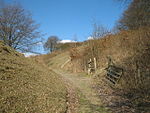Roman Catholic Diocese of Arundel and Brighton
Christian organizations established in 1965Religion in East SussexReligion in SurreyReligion in West SussexReligious organisations based in England ... and 3 more
Roman Catholic Diocese of Arundel and BrightonRoman Catholic Ecclesiastical Province of SouthwarkRoman Catholic dioceses and prelatures established in the 20th century

The Diocese of Arundel and Brighton (Latin: Dioecesis Arundeliensis-Brichtelmestunensis) is a Latin diocese of the Catholic Church in southern England covering the counties of Sussex and Surrey (excluding Spelthorne, which is part of the Diocese of Westminster). The diocese was erected on 28 May 1965 by Pope Paul VI, having previously been a part of the larger Diocese of Southwark, which was elevated to an archdiocese with a new ecclesiastical province on the same date.
Excerpt from the Wikipedia article Roman Catholic Diocese of Arundel and Brighton (License: CC BY-SA 3.0, Authors, Images).Roman Catholic Diocese of Arundel and Brighton
Dagnall Road,
Geographical coordinates (GPS) Address Nearby Places Show on map
Geographical coordinates (GPS)
| Latitude | Longitude |
|---|---|
| N 51.856 ° | E -0.559 ° |
Address
Dagnall Road
Dagnall Road
LU6 2FW
England, United Kingdom
Open on Google Maps










